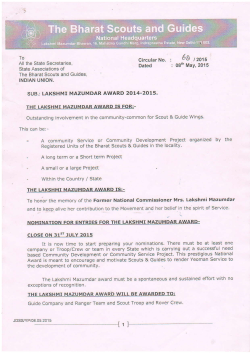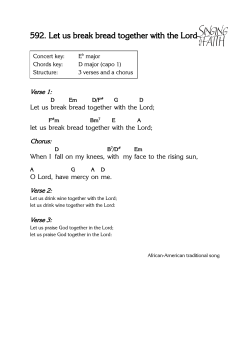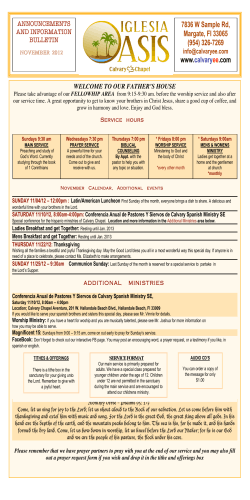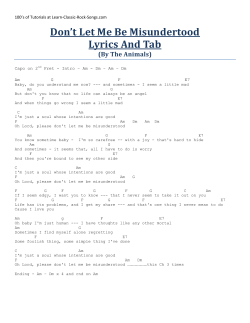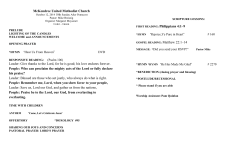
Sharad Purnima – 8 October
th
Sharad Purnima – 8 October
On the 8th October Sharad Purnima (a.k.a Kojaagari Purnima, Kumar Purnima)
festivities are observed. Sharad Purnima is a harvest festival celebrated on the full
moon day of the Hindu lunar month of Ashvin (September–October). It marks the
end of monsoon rains in India. There is a traditional celebration of the moon and is
also called the 'Kaumudi celebration', Kaumudi meaning moonlight. Do Note: Purnima (Full Moon) begins on the 7 th @ 15h43 and ends on the 8 th @
12h50pm. So Full Moon night will fall on the 7 th.
In most parts in India at night, Mother Lakshmi is worshipped and night vigil is
observed. Once a king fell into great financial straits. His queen observed this fast
and night vigil, and worshipped the goddess of wealth, Lakshmidevi. Consequently,
they were blessed by the goddess and they regained their prosperity. It is also
believed that on this day as moon and the earth are very close to each other, the
moon rays have certain healing properties of nourishing the body and the soul. It's
said that on this night Mother Lakshmi goes around from place to place asking,
"Who is awake?" ("Kojagarti?") and shows her pleasure on those she finds awake.
Hence, the night is spent in festivity and various games of amusement, in honour of
the goddess. So people sit in the moonlight singing songs, or keep themselves
entertained in some other way. Man y Hindus observe a fast from solid food and
take only fluids like coconut water or milk. Milk is boiled until it thickens, and milk
masala (a ready made combination of dry fruits) is added to it and drunk. There is
also a tradition to have cool milk and rice flakes on this night. There is an
Ayurvedic reason behind consuming rice flakes with cool milk on this night. Sharad
ritu (season) consists of two months of overlapping seasons when the summer is
about to end and the winter slowly starts. During Sharad the days are warm and
nights start to become cooler. This is perfect season for Pitta prakop when pitta
vitiates along with other two doshas. Consuming rice flakes with milk during night
time is a good remedy to pacify the pitta dosha. The Sanatkumar Samhita cites the katha of 'Kojaagari Punam.' In the Samhita
Vaalkhil Rishi narrates that in ancient times, a poor Brahmin named Valit lived in
Magadhdesh Bengal. While he was a learned and virtuous man, his wife revelled
in quarrelling, behaving totally opposite to his wishes. Once on his father's
`Shraddh' day of paying homage to the deceased she flung the 'pinda' – obsequial
cake in a sewage pit, rather than the sacred Ganga, as custom required. This
infuriated Valit. Therefore he renounced home to search for wealth. In the forests,
he met 'Naagkanyas' girls of Kaliya Naag's ancestry. These Naagkanyas had
performed the 'Kojaagari Vrat' staying awake on Aso sud Punam. They then sat
gambling with Valit. The night happened to be Aso sud Punam. Valit lost
everything. At that moment, Lord Vishnu and Lakshmidevi, happened to pass by.
Since Valit had incidentally observed the 'Kojaagari vrat', Lakshmidevi graced him
handsomeness similar to that of 'Kamadeva' the deity of love. Now attracted to
him, the Naagkanyas married Valit and gifted him their riches. He then returned
home with the riches, whence his wife received him warmly. After this episode, the
Samhita declared that those who remain awake on this night will be graced with
wealth.
On this night, Lord Krishna invited His faithful devotees, the Gopis of Vrndavan, to
play the Maha Rasa dance (traditional folkdance) with Him. They had earned His
grace by overlooking society's disdain on them, to offer Him unalloyed devotion. When They left Their homes in Vraja and arrived in Vrndavan, Lord Krishna
welcomed Them. Yet to further test Their love for him, He averred: 'Women of
character such as you, should not leave home to meet another man in the middle of
the night!' These words seared the Gopis' hearts. In extreme grief, They uttered:
'Our feet will not budge the slightest from Your lotusfeet. So how can we return to
Vraja?' Pleased with such immutable love for Him, Lord Krishna initiated the Maha
Rasa dance, by assuming as many forms as there were Gopis. At this point, They
beamed with pride that, 'Nobody's devotion can excel ours, by which the Lord
favoured us.' Instead of accepting the Maha Rasa as the Lord's grace, ego marred
Their devotion. Therefore He instantly vanished from the Rasa mandal! Now filled
with remorse, the Gopis repented. Recalling Lord Krishna's divine episodes 'lila',
They lamented the separation and sang kirtans (Srimad Bhagavatam 10311)
Describing the 'lila' in the Srimad Bhagavatam (10/30/25), Srila Shukdeva Goswami
narrates to king Pariksit: 'O Pariksit! Of all nights, that night of Sharad Purnima
became the most resplendent. With the Gopis, Lord Krishna roamed the banks of
the Yamuna, as if imprisoning everyone in His lila!'
The spiritual import of 'Jaagrati' (awake) is to remain vigilant. Vigilance in one's
heart is the gateway to the Lord's divine abode. Devotees should not let mundane
desires, of wealth, lust and so forth, enter their hearts. When faced with obstacles
such as: success and failure, happiness and misery, honour and insult, the devotees
should remain unflinching in their devotion to God. In this manner, they should
remain vigilant at the gateway to the Supreme Lord, not letting any mundane
objects through. Therefore, every moment in our lives requires vigilance and this in
itself becomes a subtle form of 'tapas' austerity. Those who performed severe
austerities without vigilance, succumbed to Maya. Vishwamitra performed
austerities for 60,000 years, but lost 'Jaagruti' vigilance in Menka's company.
Similarly, lack of vigilance toppled Saubhari Rishi, Ekalshrungi, Parashara and
others. Just as the night sky of Sharad Purnima is clear and suffused with lunar
resplendence, the aspirant should similarly endeavour to purify his/her Ego. For
this one has to eradicate bodyconsciousness and mundane desires and imbibe God
consciousness. For this the aspirant needs to seek a proper bonafide Guru, who is
the gateway to moksha (the Lord). The Gajalakshmi Puja
This day is also observed as the birthday of Mother Lakshmi by many in India.
Therefore, many people worship Mother Lakshmi at their homes and keep
themselves awake by playing 'Pasha' (Dice) and other indoor games. Significantly it
suggests that those who wish to acquire wealth should always be vigilant at night.
On the morning of the 8th after having a bath, you should wear fresh clean clothes.
Then at your designated prayer place facing east, sprinkle water to purify the place.
Place a plain red piece of cloth (50cm by 50cm) on your designated place by your
puja place. Then spread a handful of rice on the red cloth. Now place your Lord
Ganesh murti/picture, your Lakshmi Lamp/picture on the white rice. Keep a small
lota/cup of water by the Lamp/picture. Bow down in all humility to Lord Ganesh
and the Lamp. Now talk to Mother Lakshmi saying that “ Mata I hereby take will
like to observe this day of Sharad Purnima. Please bless me Mata. Thank you
Mata”. Now offer the Lord Ganesh murti or picture the tray which consists of
agarbatti, clay lamp and red flower petals (of course light the agarbatti and lamp).
Turn the tray seven times clockwise around Lord Ganesh and pray to Shree
Ganeshji to remove all obstacles in the path of your Lakshmi prayer. Now light your
Lakshmi Lamp which you light daily. Now place your hands in a Namaste position
and recite the following mantra. Should the Sanskrit be too difficult to chant then
you can just read the English. Yaa rakthaambuja Vaasini Vilasini Chandaanshu tejasvini Yaa rakta rudhirambera Harisakhi Yaa shree manolhaadini / Yaa ratnaakara manthanaat pragatita vishnosvaya gehini Saa maam paatu manorama Bhagavati Lakshmi padmavati // “Oh Goddess Lakshmi, you who resides in redlotus, who is graceful, who has the
glorious rays of divine lustre, who is completely reddish, who is clothed in the form
of blood, who is the beloved of Lord Vishnu. O Mother Lakshmi you who gives
happiness to the heart, who was created by the churning of the ocean, who is the
wife of Lord Vishnu, who is born from the lotus flower, who is extremely worthy to
be worshipped, please kindly protect me.” Now offer the Lamp/picture of Mother Lakshmi (which consists of agarbatti, clay
lamp and red flower petals) just like how you did for Lord Ganesh. Turn seven
times clockwise around the Lamp/picture. Next offer Mother Lakshmi some cut
fruits or sweet preparations and a glass of milk which should be on a plate. After
that keep the lota/cup of milk by the Lamp/picture.
*** This is optional but you may chant or play on a CD player, the Lakshmi Chalisa
or any mantras of Lakshmi Devi and then offer Aarti to Mother Lakshmi. Then offer your personal prayers to Mother Lakshmi. Ask Mother Lakshmi for
whatever you want and Ma being so merciful will grant what you desire. But be
careful what you desire for...
Offer this following prayer of forgiveness when you are done: Om yaani kaani cha paapaani janmaantara kritaanee cha, taani sarvaani vinashyanti pradakshinaa pade pade // Finally bow down in all humility to Lord Ganesh and the Lamp/picture.
DISCLAIMER: Do note that Dipika is not affiliated to any Hindu group or
organization. We at Dipika choose to remain an independent repository of spiritual
advice. We appreciate that there are variances between organisations and humbly
request that if our views differ from yours that you respect our decision not to
conform to the prescripts of your particular organisation. We remain committed to
spiritual advice which is based on scripture.
Thank you for taking time to read this article. We are trying to reach out not only to
Hindus but to others of other faiths as well. By compiling and publishing these
articles we hope that others will understand what a beautiful and diversified way of
life Hinduism (Sanathan Dharma) really is. Please pass these articles to your
friends and family and print them and keep them in a file. These articles are
published so that it will be a reference to you and your family when you need
clarification of certain topics. Jai Shree Radha Krsna. Please do visit our Website to receive more free information about our beautiful culture
www.dipika.org.za
Compiled for the upliftment of Sanathan Dharma Narottam das & Arjun Nandlal
Email info@dipika.org.z
a
© Copyright 2025
